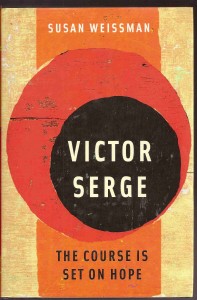Stalin’s killings created the first holocaust, destroying a whole generation of revolutionaries, the bloodiest counter-revolution so far in history. – Victor Serge (summary), in Susan Weissman: The course is set on hope,Verso, London, 2001
Serge was an independent Soviet revolutionary, a category closed to “official” history. Official history, often, says that the massive persecutions in Russia in the 1930s were caused by Stalin being mad and rid by paranoia, although recent research has attempted to calm down this picture (see e g Montefiore’s Stalin – The Court of the Red Tsar 2004). Stalin’s paranoia is not the best explanation angle, and Weissman’s excellent work on Serge helps to show the deeper sociological pattern involved, describing massive persecution, imprisonment and deaths.
Is it correct to classify this in a term like holocaust? This is my choice of word, using a later term, summing up Serge. I think, yes. Not only are the numbers possibly as massive as the number of Jews killed in the Holocaust – altogether, working over a longer period, Stalin’s camps killed more than Hitler’s, even if they used frost rather than gas, and were not as specialized towards killing as in the Nazi case (see e g Anne Appelbaum: Gulag – a history, 2004). It is also the case that the killing of independent revolutionaries, “a whole generation”, in Serge’s horrified words, was well-planned, systematic and in intent, on the same scale as the gas ovens in Auschwitz. Stalin’s murderers did not carry gas chambers around, but used pistols and other means – an ice axe, in the case of Trotsky – but the pattern was the same, the communists in Germany were the first inmates of the concentration camp system, “paving the way” in a negative sense for the Jews. The persecution of revolutionaries, across the Stalinist and Nazi regimes, was not “the” holocaust, but probably the main preparation for it, and in a sense, its overlooked sociological twin.


